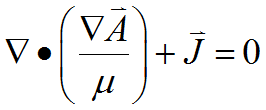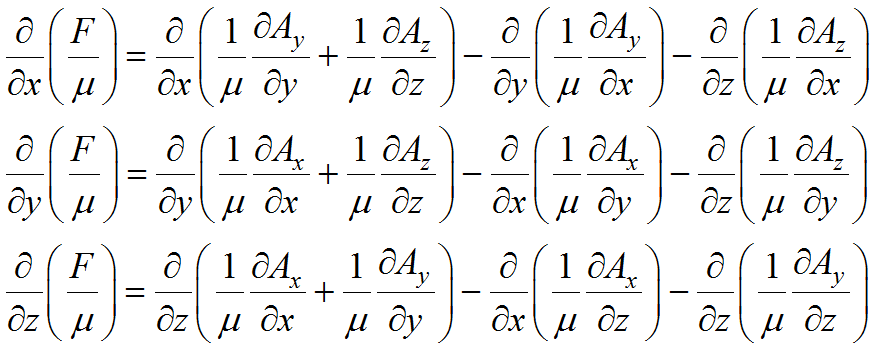|
<< Click to Display Table of Contents >> Divergence Form |
  
|
|
<< Click to Display Table of Contents >> Divergence Form |
  
|
In two dimensional geometry with a single nonzero component of ![]() , the gauge condition
, the gauge condition ![]() is automatically satisfied. Direct application of eq. (2.4) is therefore well posed, and we can proceed without further modification.
is automatically satisfied. Direct application of eq. (2.4) is therefore well posed, and we can proceed without further modification.
In 3D, however, direct implementation of eq. (2.4) does not impose a gauge condition, and is therefore ill-posed in many cases. One way to address this problem is to convert the equation to divergence form using the vector identity
(2.6) ![]() .
.
As long as ![]() is piecewise constant we can apply (2.6) together with the Coulomb gauge
is piecewise constant we can apply (2.6) together with the Coulomb gauge ![]() to rewrite (2.4) as
to rewrite (2.4) as
(2.7) 
If ![]() is variable, we can generalize eq. (2.6) to the relation
is variable, we can generalize eq. (2.6) to the relation
(2.8) 
We assert without proof that there exists a gauge condition ![]() which forces
which forces
(2.9)  .
.
The equations governing ![]() can be stated as
can be stated as

It is not necessary to solve these equations; we show them merely to indicate that ![]() embodies the commutation characteristics of the system. The value of
embodies the commutation characteristics of the system. The value of ![]() is implied by the assertion (2.9). Clearly, when
is implied by the assertion (2.9). Clearly, when ![]() is constant, the equations reduce to
is constant, the equations reduce to ![]() , for which
, for which ![]() is a solution.
is a solution.
Using the definition (2.9) we can again write the divergence form
(2.10) ![]() .
.